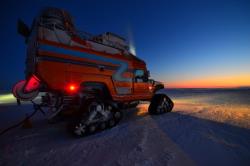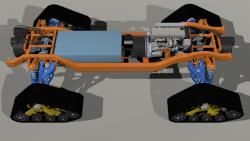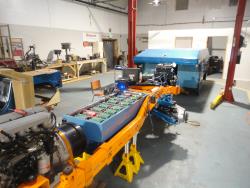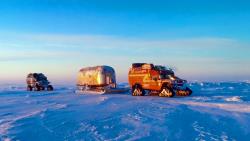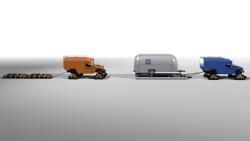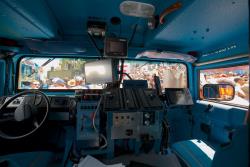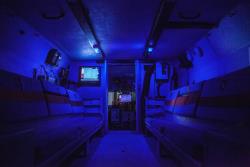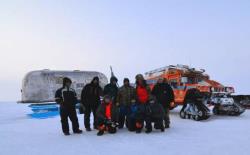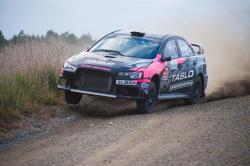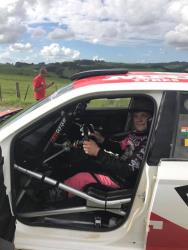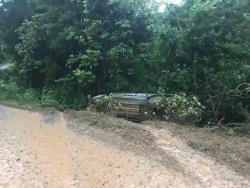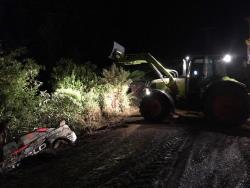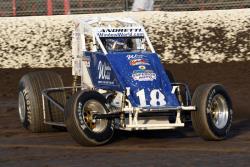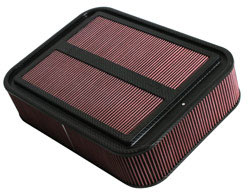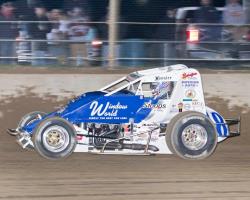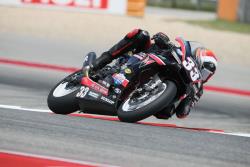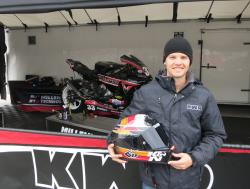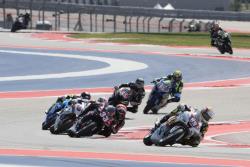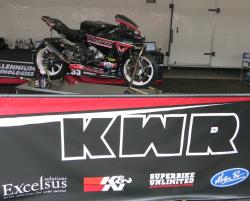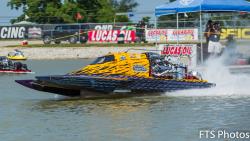
Racing at the newly constructed Lucas Oil Raceway in Wheatland, Missouri | Although the sport of drag boat racing began in the 1960s, it could never gain traction with fans. “It bounced back and forth between all kinds of sanctioning bodies that never seemed to accomplish much,” noted Mike Chastain of Lucas Oil. “Lucas Oil came in to stabilize it.” According to Chastain, Lucas Oil was a sponsor of the previous drag boat racing sanctioning organization called International Hot Boat Association (IHBA). The oil company recognized that the organization and possibly the sport of drag boat racing was under threat of ending and its executives considered stepping in to save it. “It came to the point where if we were going to get involved with racing we needed to take over and manage the series ourselves,” explained Chastain. Lucas Oil decided to make the commitment. “There were a lot of little club racing associations across the United States in all motorsports. What we did was came in and set up one sanctioning body with a stable set of rules nationwide,” Chastain added. Chastain noted that the rules for a new sanctioning body were already in place. He gathered a committee consisting of racers that considered the rules and then passed a recommendation. At that point Ken Dollar of Lucas Oil was selected as Director of the series and he met with Chastain and the racers to encourage them to move forward in making a stable set of rules that benefited safety and racing. After some time, stakeholders in the series established the rules and the Lucas Oil Drag Boat Racing Series was formed. Next, Lucas Oil promoted the group. “Everything we do in racing is television driven,” Chastain explained. “We’ve always been a huge company as far as promotions through print media as well as other methods, but primarily we are television driven. Lucas Oil Products was made from advertising on television. So we used that format. We worked with four or five networks including CBS Sports, CBS, NBC Sports, Fox Sports, SPEED, and our own network called MAVTV Motorsports Network.” Then venues where races could be held had to be chosen. “Some of the venues were already in place,” continued Chastain. “We met with promoters and we worked out agreements to get them to hold races for the organization. Other venues we created on our own. For us, our first priority was to keep the sport safe. That was our bottom line. It’s a dangerous motorsport and it’s hard to find facilities out there that are long, narrow, and shallow enough. So we researched all the different places that had facilities for racing and a good fan base. We considered locations like Phoenix, Arizona; San Angelo, Texas; which is a suburb of San Antonio, and more that had facilities available. Most of them were lakes that were long enough to take on drag racing boats. It takes about 4,000 feet of space to race and shut down because obviously the boats don’t have any brakes. You have to stop them using parachutes. We also didn’t want racers in water deeper than 20 feet because if something happens and the capsules of the boats get ejected, we needed to be certain that our rescue divers would be able to find them.” Ultimately, venues were found in a number of states including Missouri, Georgia, Texas, Arizona, California, Oregon, Oklahoma, Louisiana, and Kentucky. Most of the venues are used year after year, but the organization also tries to add new venues. Some are newly constructed including the Lucas Oil Raceway in Wheatland, Missouri. “It is a $7 million facility that is the only one in the world specifically designed for drag boat racing,” added Chastain. 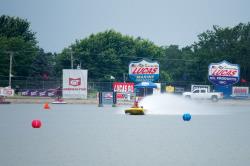
Drag boats can travel 1,000 feet in as little as 3.4 seconds at 250 mph | Hydro boats are raced in the Lucas Oil Drag Boat Racing Series.The Pro Class includes Top Fuel Hydros, Top Alcohol Hydros, Top Alcohol Flatbottom, and Pro Mod. Two types of hulls are used –- watercraft and outrigger style. The size of the engine for the Top Fuel category is limited to 500 cubic inches and the boats can use only nitro-methane and alcohol fuel. These boats travel at speeds of 250 mph and travel 1000 feet in about 3.396 seconds. The boats are designed to ride above the surface of the water because they feature a tunnel between the front sponsons. A W-drive propels the crafts down the track with twin props that rotate counter to each other at 20,000 rpms. The Top Alcohol Hydros travel at speeds of more than 200 mph and commonly achieve 1,000 feet in 4.322 seconds. These boats may use alcohol or nitro-methane fuel and blown, or supercharged, engines and un-blown fuel engines that do not exceed 565 cubic inches. The Top Alcohol Flatbottom boats travel a 1,000-foot course and have been known to achieve speeds that are more than 160 mph and achieve times of 5.2 seconds. The hulls are flat bottom with a minimum length of 16 feet. There are no horizontal breaks. The fuel and engine dynamics used in this class is the same as the Top Alcohol Hydros. However, screw blowers are not allowed. The Pro Mod Class uses boats with a hydro style hull and V-drive. The engine has the same specs as the Top Alcohol Hydro and Top Alcohol Fuel, but there is no limit on cubic inches. Nitrous oxide is not permitted in the professional classes except in Pro Modified. The Sportsman Class includes Pro Eliminator, Top Eliminator, Modified Eliminator, Stock Eliminator, and Quick Eliminator. The Pro Eliminator boats can use engines of any cubic inch displacement. That includes naturally aspirated, supercharged or fuel injected including electronic fuel injection systems. Fuels used include gasoline, alcohol, pure methanol, ethanol, nitro-methane, E-85, or nitrous oxide. The boats must stay within an 8.00-8.99 seconds index to compete. The Top Eliminator competitors want to achieve 9.00 – 9.99 seconds index. The engine dynamics and fuel specs are the same as they are in Pro Eliminator. Engines for the sportsman classes can use superchargers or turbochargers. However, proper blower restraints must be used as required based on fuel used. Boats in the Modified Eliminator Class strive for 10.00-10.99 seconds index. Any hull design with a V bottom is acceptable, but blown engines are not permitted. The engine specs and dynamics as well as the fuel and hulls for boats in the Stock Eliminator class are the same as it is for Pro Eliminator, Top Eliminator and Modified Eliminator. These boats reach speeds of more than 95 mph. The Quick Eliminator runs at speeds of 6-seconds per 1,000 feet. It is the fastest non-capsule boat class. 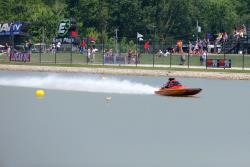
Lucas Oil Drag Boat Racing is a fun event for competitors and spectators alike | The Bracket Class, which is for racers who are 18 years old and older, is for river racers that achieve 12 seconds or slower elapsed time. Engines specs are the same as they are for the Sportsman Class. This class includes Personal Watercraft 1 and Personal Watercraft 2. Personal Watercraft 1 uses 4-stroke gasoline or 2-stroke gasoline/oil mix engines.Personal Watercraft 2 is the entry-level class for teenage racers with approved water safety class and parental consent. These boats travel a quarter-mile at 50 to 60 mph. There are four divisions with its own group of classes. Pro Class • Top Fuel Hydro • Top Alcohol Hydro • Top Alcohol Flat • Pro Modified • Pro Outlaw Division 1 • Pro Eliminator • Quick Eliminator • Top Eliminator • Modified Eliminator • Stock Eliminator • River Racer • Personal Watercraft 1 Division 2 • Quick Eliminator • Top Eliminator • Modified Eliminator • Stock Eliminator • River Racer • Personal Watercraft 2 Division 3 • Pro Eliminator • Quick Eliminator • Top Eliminator • Modified Eliminator • Stock Eliminator • River Racer • Personal Watercraft 3 Minimum age for racers is 16 years old. According to Chastain, new racers must get a license in order to participate in events. To get the license their boat must pass a safety inspection and the racer must perform a launch, and make a half pass and then a full pass while a committee watches. Committee members focus on a racer’s performance and decide if the racer deserves the license. There are 10 national racing events per year. The season runs from March through the first weekend of November. The schedule is determined during meetings held in the fall each year with racers and Series executives. The schedule is published by January 1 each year. 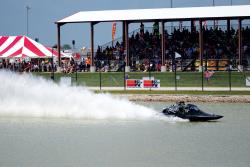
K&N has been a sponsor of Lucas Oil Drag Boat Racing and other Lucas Oil series since the beginning | There are also member state associations that run races in their own series under a Lucas Oil “umbrella” said Chastain. The local associations schedule between six to eight events on their own each year for a total of about 75 regional races a year. Lucas Oil and the Lucas Oil Drag Boat Racing Series business partners fund a point system for every class. Pay off is given to the first place down to the 10th place finisher. “Points are based on performance,” said Chastain. “A racer gets so many points when they enter an event, so many points when they qualify as well as points if they are the number one qualifier.” K&N Engineering has been a business partner of the Lucas Oil Drag Boat Racing Series for 12 years and has had a relationship with Lucas Oil for 15 years, said Chastain. “They have been a heavy player with us in cross marketing and they have helped us reach race fans and racers,” he said. “K&N helps with print media, social media, and television, as well as with contingency programs with racers to promote the series.” The schedule for 2017 is as follows: March 31-April 2 Chandler, Arizona Valley of the Sun Spring Nationals April 14-15 Parker, Arizona Colorado River Challenge June 9-11 Wheatland, Missouri John Hass Memorial June 23-25 San Angelo, Texas Showdown in San Angelo July 21-23 Augusta, Georgia Augusta Southern Nationals August 11-13 Marble Falls, Texas Marble Falls Lakefest 2017 September 1-3 Wheatland, Missouri 7th Annual Diamond of Drag Boats Nationals Sept 30-Oct. 1 San Angelo, Texas Lucas Oil Fall Shootout October 13-15 Parker, Arizona Lucas Oil Thunder on the River November 3-5 Phoenix, Arizona Lucas Oil World Finals | 
